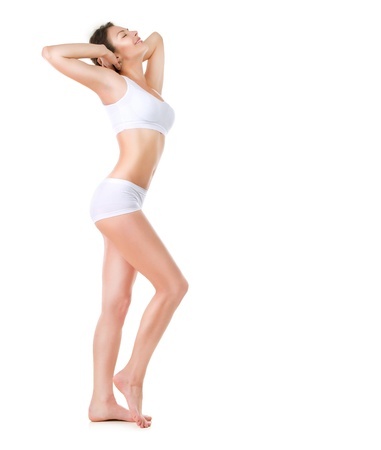Ultherapy
What is Ultherapy?
Ultherapy is the only non-invasive treatment approved by the FDA for lifting the skin on the neck, chin, and brow. Ultherapy uses focused ultrasound to lift and tighten the loose skin over time, without any downtime.
How is Ultherapy different from other cosmetic procedures?
Ultherapy is the only non-surgical cosmetic procedure that uses focused ultrasound to stimulate the growth of new collagen deep within the skin. The production of new collagen occurs over time, so results can become more apparent over three to six months. The procedure takes only about an hour for most patients, and there is no downtime.
It also is the only procedure to use ultrasound imaging, which allows us to see the layers of tissue we target during the treatment and ensure the energy is deposited precisely to where it will be most effective.
Does it hurt?
A recent software upgrade called “Ultherapy Amplify” now affords a more comfortable procedure. While comfort thresholds vary from patient to patient, most patients now report that the procedure is quite tolerable. If any discomfort does occur, it happens while the ultrasound energy is being delivered. This sensation is temporary and is a positive signal that the collagen-building process has been initiated.
We take measures to make the experience as pleasant as possible, and patients tell us they leave comfortable and excited about the benefits to come.
How long does it last?
Patients treated with Ultherapy still have fresh young collagen after a year’s time following the procedure, but skin continues to age. Future touch-up treatments can help keep pace with the aging process, which varies by individual.
In The News
From NewBeauty.com
“Ultherapy is another great treatment that I recommend to dramatically lift, tighten and tone facial skin, giving you noticeable results with no downtime,”
-Dr. Nichols, Dermatologist
NEW BEAUTY
Rid Yourself of Eye Bags That Show Age
Ultherapy tightens the skin by delivering micro-focused ultrasound deep below the skin’s surface and Restylane Silk then can be used to fill in the troughs. Ultherapy is the only non-invasive procedure approved by the FDA that tightens and lifts.
Dr. Leif Rogers, Beverly Hills plastic surgeon
Examiner.com
Are there any side effects?
There may be slight redness for up to an hour or so following the treatment, and a small percentage of patients may have slight swelling, tingling or tenderness to touch, but these are mild and temporary in nature.
How much does it cost?
Patients can expect to pay between $1,000 and $5,000, depending upon the areas treated. Of course, the cost of Ultherapy can vary depending on geographic location and physician practice. Ultherapy meets the demand for something between skin creams and surgery.
Is Ultherapy safe?
The procedure has been cleared by the FDA after demonstrating safety in clinical studies, and over 100,000 treatments have been performed safely around the world. In addition, ultrasound energy has a proven track record, with use in the field of medicine for more than 50 years.
How many treatments does it take?
The majority of patients only need one treatment; however, some may benefit from more than one treatment depending on how much laxity they have and their body’s own biological response to the ultrasound and the collagen-building process.
Who is a good candidate for Ultherapy?
A good candidate for Ultherapy is someone with skin that has some degree of laxity, to the point of looking, and often feeling, less firm. A lowered eyebrow line or sagging skin on the eyelids, for instance, is often the first sign of “maturing” skin. Loose skin under the neck and under the chin signals a patient might be a candidate. Typically, those in their thirties and older who have mild to moderate skin laxity are candidates.
While Ultherapy is not a replacement for a surgical facelift, there are many people who want some lifting but are not ready for surgery, either mentally, physically or financially. There also are younger people who want to “stay ahead of the game” as well as those looking to prolong the effects of cosmetic surgery.
What about treating anatomical regions other than the face?
Currently, Ultherapy is a treatment for the face and neck with a specific clinical indication for lifting the skin on the neck, chin, and brow.
What does collagen do? How does Ultherapy stimulate the creation of collagen?
Collagen is a natural protein that gives skin its youthfulness by keeping it firmed and toned. As we age, collagen loses its strength and its ability to stand up to the effects of gravity that pull the skin downward. Ultherapy uses focused ultrasound to generate a thermal effect under the skin. The thermal effect essentially jumpstarts a repair process that strengthens existing collagen and produces fresh, new collagen.
Can men have it done?
Yes! Both women and men globally receive Ultherapy.
